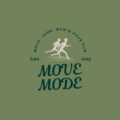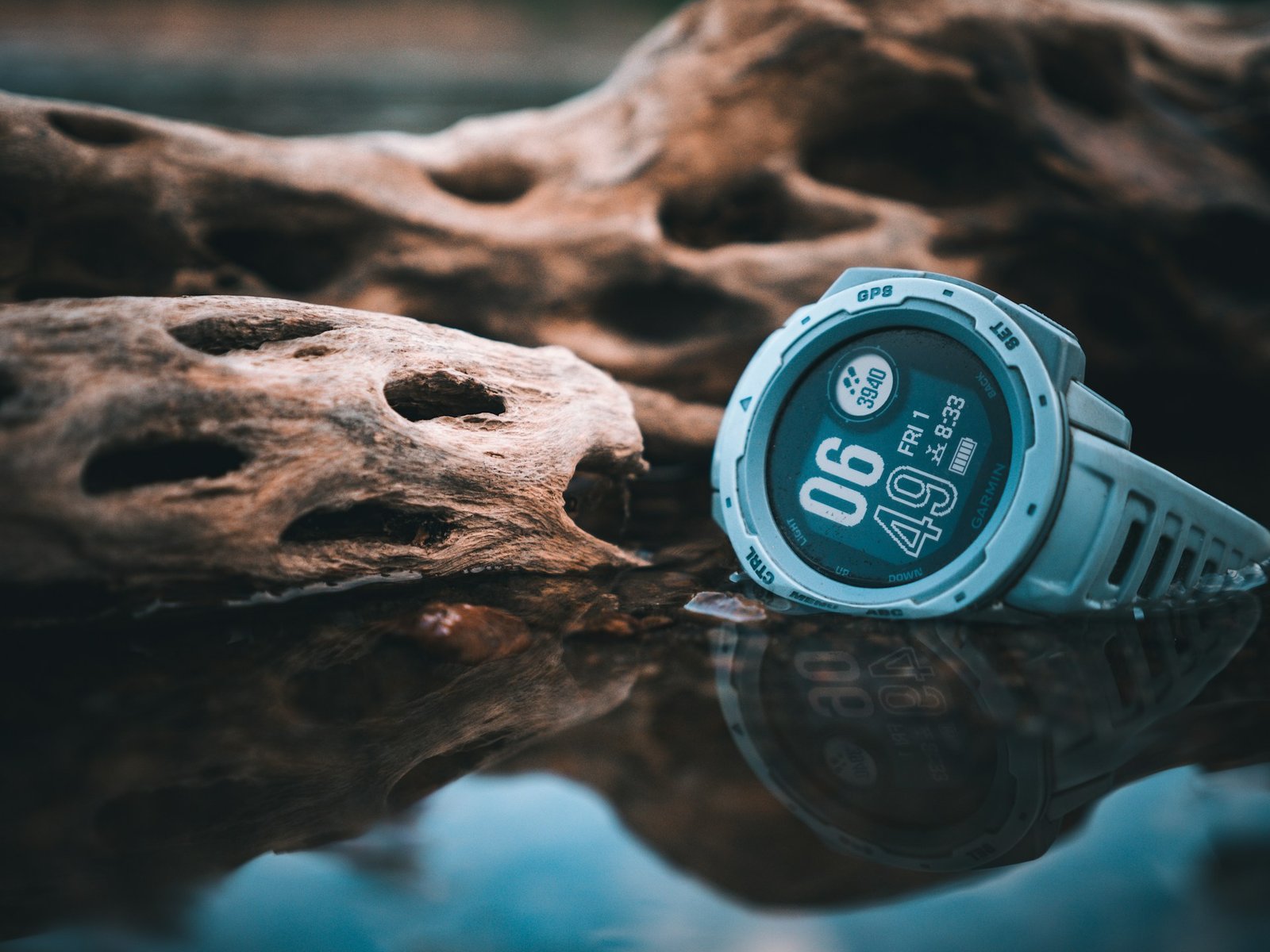
Best Wearable GPS Watches
Disclosure: We may earn money from the companies mentioned in the post, but we only recommend brands that we truly love and trust
As a runner, tracking your performance is essential for improvement, whether you’re training for a race or simply aiming to boost your fitness levels.
This guide will help you rank and review the top GPS running watches for 2025. We’ll break down their features, pros, and cons so that you can make an informed decision.
Ranking the Best Wearable GPS Watches
Garmin Forerunner 955 – The All-Around Best GPS Running Watch
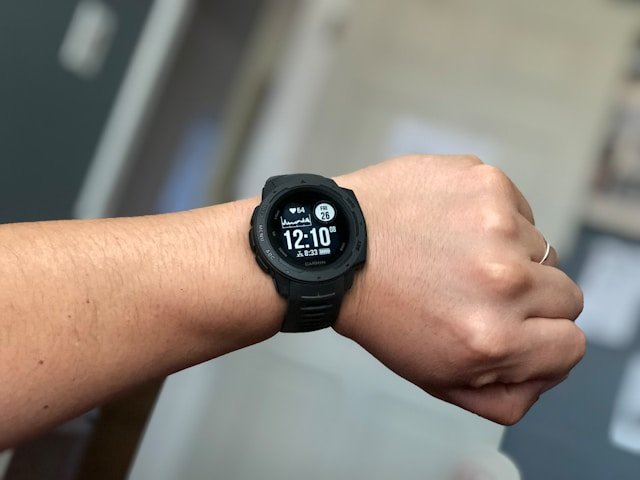
Best for: Runners looking for a versatile, all-in-one device
Garmin has long been known for producing some of the best GPS running watches, and the Garmin Forerunner 955 is no exception.
Key Features:
- Multi-sport tracking: Whether you run, bike, swim, or do other activities, the Forerunner 955 tracks them all.
- Advanced metrics: Tracks important metrics such as heart rate, VO2 max, lactate threshold, and running power to optimize your performance.
- Battery life: Enjoy up to 15 days in smartwatch mode and 42 hours with GPS enabled, making it perfect for long-distance training.
Pros: The Garmin Forerunner 955 is celebrated for its GPS accuracy, allowing runners to track their distance, pace, and routes with precision.
Cons: The high price point may be a turn-off for beginner runners, especially since it includes many advanced features.
Suunto 9 Baro – Best for Durability and Long Battery Life
Best for: Runners who need extreme durability and ultra-long battery life
For runners who love to push their limits and need a rugged, long-lasting device, the Suunto 9 Baro is the ideal choice
Key Features:
- Extended battery life: The Suunto 9 Baro offers up to 120 hours of GPS tracking in ultra-long battery mode and up to 25 hours in standard GPS mode.
- Barometric altimeter: This feature provides real-time elevation data, crucial for trail runners and those running in mountainous areas.
- GPS tracking: Equipped with multiple GPS systems, the Suunto 9 Baro ensures highly accurate location data even in challenging conditions.
Pros: The Suunto 9 Baro excels in battery life and durability, offering features that cater to ultra-runners or adventurers. The rugged design and water-resistance make it the perfect companion for tough environments and off-road runs.
Cons: While it offers great performance, the bulkier design might not appeal to everyone, especially runners who prefer a lighter watch.
Polar Vantage V2 – Best for Heart Rate Monitoring
Best for: Runners who want advanced heart rate tracking and recovery data
Polar has long been a leader in fitness monitoring, and the Polar Vantage V2 is a testament to their expertise. It focuses on providing runners with precise heart rate tracking and in-depth recovery insights, which are critical for avoiding overtraining.
Key Features:
- Heart rate monitoring: The Polar Vantage V2 uses Polar Precision Prime technology for accurate wrist-based heart rate tracking, ensuring you stay within your optimal training zones.
- VO2 max estimate: This watch helps you assess your aerobic fitness level, giving you an idea of how efficiently your body uses oxygen during exercise.
- Training load and recovery: It offers detailed insights into how much stress your body has undergone during your workouts, along with recommended recovery time.
Pros: The Polar Vantage V2 is best known for its heart rate monitoring accuracy, making it an excellent choice for runners focused on cardiovascular training. It also provides detailed recovery data, so you can train smarter and avoid burnout.
Cons: The watch lacks some of the advanced mapping and navigation features found in other models. It’s also less customizable than other GPS running watches, which may limit users who prefer to fine-tune their settings.
Apple Watch Series 8 – Best for Everyday Wear and Fitness Tracking
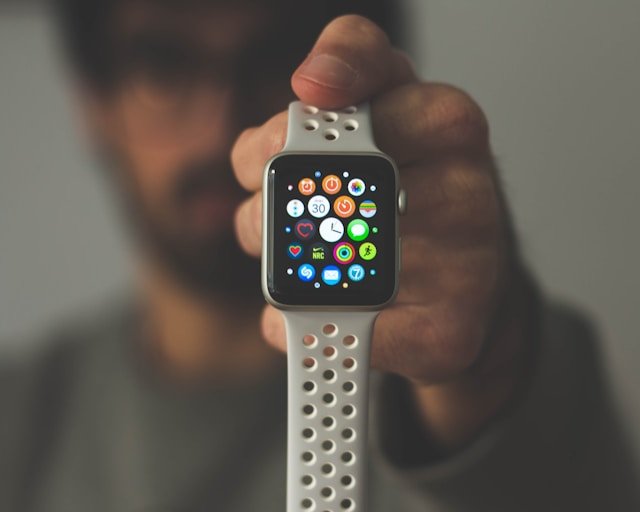
Best for: Runners who want a versatile smartwatch for all-day use
The Apple Watch Series 8 isn’t strictly a running watch, but its impressive fitness features have made it a popular choice for runners who need a smartwatch that can do everything from tracking workouts to answering calls.
Key Features:
- Fitness and health tracking: Tracks a wide range of activities, including running, cycling, and swimming, as well as heart rate, blood oxygen levels, and more.
- Fitness app integration: Syncs seamlessly with popular fitness apps for enhanced tracking and analysis.
- GPS and maps: Provides accurate GPS tracking for outdoor runs and integrates with fitness apps like Strava.
- Battery life: Up to 18 hours of battery life, but you can extend it using power-saving modes.
Pros: The Apple Watch Series 8 is a versatile smartwatch that offers more than just fitness tracking. Its integration with third-party apps and sleek, stylish design makes it perfect for daily wear, while still offering reliable GPS and fitness tracking.
Cons: Compared to more dedicated running watches, the battery life is relatively short, especially during extended workouts. It’s also less specialized for running-specific features like advanced pace tracking or running power.
Garmin Forerunner 245 – Best for Mid-Range Performance
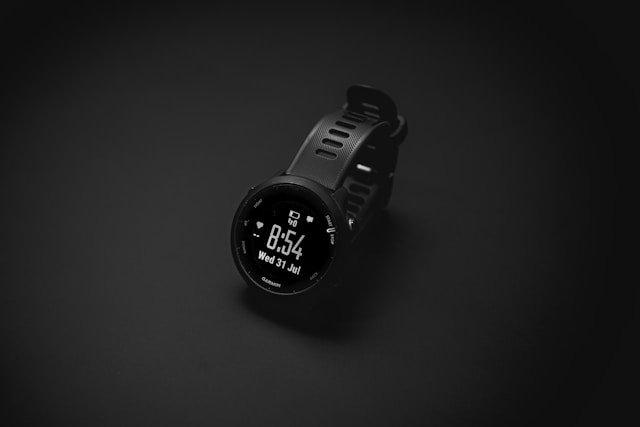
Best for: Runners looking for advanced features without breaking the bank
The Garmin Forerunner 245 is a mid-range GPS running watch that offers excellent value for money. It provides a strong balance of performance features, ease of use, and affordability. For runners who want more than the basics without paying for premium features they don’t need, the Garmin Forerunner 245 is a great option.
Key Features:
- Advanced metrics: Tracks running dynamics like cadence, ground contact time, and stride length. It also offers VO2 max and lactate threshold estimates.
- GPS accuracy: Includes multi-GNSS support, ensuring precise GPS tracking for your outdoor runs.
- Safety features: Includes incident detection, which alerts emergency contacts if you’re in an accident during your run.
- Music storage: The Forerunner 245 Music model allows you to store up to 500 songs, so you can run without needing your phone.
Pros: The Garmin Forerunner 245 provides a solid balance of features and affordability. It’s lightweight and comfortable to wear during long runs, and its GPS accuracy ensures you get the data you need for performance tracking.
Cons: While it offers a great feature set, the Forerunner 245 doesn’t include some of the advanced mapping or turn-by-turn navigation that you find in higher-end models like the Forerunner 955. It also lacks some of the more premium training metrics, like running power, which might be important for serious athletes.
